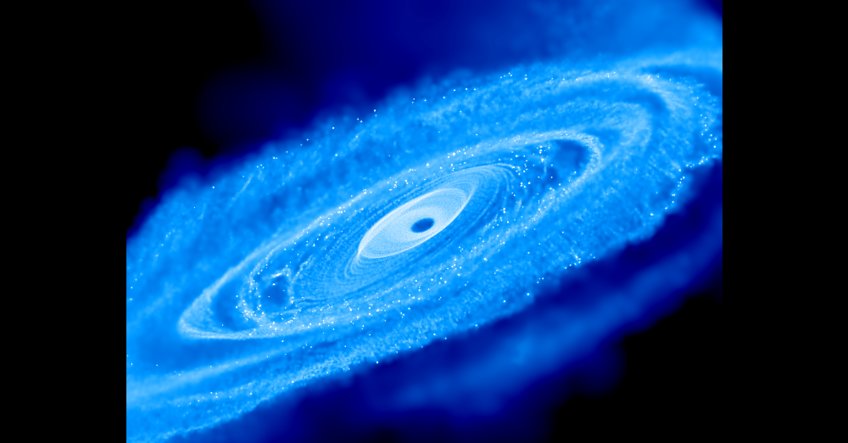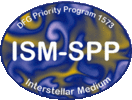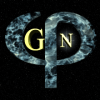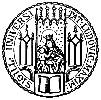
Meetings
Gas Dynamics and Star Formation
in the Extreme Environment of Galactic Nuclei

In recent years, observations have made huge progress in observing Galactic Nuclei of nearby galaxies in multiple wavelengths and high resolution. Especially the use of integral field units enables us to get an accurate representation of the structure and dynamics of the multi-phase interstellar medium as well as the stars in the extreme environment close to supermassive black holes. In this Ringberg Workshop, we are especially interested in what we can learn from our knowledge of the local ISM, what physical processes are the most important to describe the dynamics and physics in general, how stars are able to form under these conditions as well as the relation between nuclear star formation and feeding of the central supermassive black hole and (the onset of) nuclear activity cycles. Due to its proximity, our own Galactic Centre (GC) is an ideal laboratory for studying the relevant processes under these extreme conditions. Research on the GC has recently made huge progress: Detailed observations of the orbital parameters of the so-called S-stars allowed an extremely accurate determination of the mass of the central supermassive black hole (SMBH). The recently detected fast moving gas cloud G2 will pass the SMBH at a distance of only 2200 Schwarzschild radii within the next couple of years, with the exciting perspective to directly watch how SMBHs accrete material over the forthcoming decade and to probe the density distribution and the thermodynamic state of the hot accretion flow in the immediate vicinity of the SMBH. Theoretically predicting this unique process is essential for future observing campaigns. We will also discuss questions like: What kind of accretion mechanism will be triggered by such an event? How does this compare to other objects like nearby Seyfert galaxies, etc.? The workshop is supposed to bring together selected international experts working on the physics of Galactic Nuclei to discuss recent advances and is organized as a joint workshop of observers and theorists, located at MPE and MPA.
Annual Meeting of the Astronomische Gesellschaft, Hamburg,
September 24-28, 2012
The Physics of the Interstellar Medium, ISM-SPP school
Puzzles of Galactic Nuclei - Scientific Workshop at MPE, Munich

The gas physics is now known to be characterized by a turbulent multi-phase interstellar medium. This in combination with star formation and stellar ejecta regulates the feeding of the super-massive black hole. In turn, the mechanical and radiative output contributes significantly to the total energy in the gas. Simulations coupling hydrodynamics, gravity and radiative transfer including stellar and black hole feedback are required to shed light on these complex phenomena. Multi-wavelength and multi-scale coverage are required to constrain the models, and are now becoming available for nearby galaxies.
Like pieces of a jigsaw, information from the Galactic Centre, nearby active, and passive galaxies, powerful high-redshift quasars, and even black-hole deficient nuclei needs to be combined with such simulations to understand the physics of galactic centers with super-massive black holes. A related issue is the connection between super-massive black holes and galaxy evolution. The aim of the workshop is to focus on the unsolved puzzles in this field, thus a generous amount of time will be reserved for discussions.
Physics of Galactic Nuclei - Scientific Workshop at Ringberg Castle

The physics of galactic nuclei has recently attracted substantial renewed interest, also due to the tentative connection to galaxy evolution.
Spectacular new high spatial resolution observations based on adaptive optics (SINFONI, NACO) and interferometric techniques (MIDI) recently unveiled unexpected new details of the central region of our own galactic centre, as well as nearby Seyfert galaxies. A consistent model has been developed that can explain different types of active galactic nuclei (AGN) as a result of inclination angle dependence of a torus surrounding an accretion disk around a central black hole. Current research focuses on the interaction with the intense radiation field, interaction of gas streams pointing towards the centre or star formation and subsequent feedback from a nuclear stellar cluster. These processes might stir turbulence in the Broad Line Region (BLR), the adjacent molecular/ dusty torus or the Narrow Line Region (NLR). The resulting multiphase turbulence governs the small-scale dynamical as well as thermodynamical evolution of the gas and necessitates special numerical techniques. This, together with the development of new efficient codes concerning the coupling of radiative transfer with hydrodynamics enables a realistic treatment of the main physical processes acting in the complicated environment we are facing in galactic nuclei.
The link to the large scale structure of the galaxy is given by black hole feedback, constrained for example by the black hole sigma relation and the redshift evolution of AGN. A better understanding of the physics of the galactic centre environment and its possible physical feedback processes towards larger scales, is therefore also essential for quantitative modelling of galaxy evolution.
The main aim of this workshop is to bring together observers and theoreticians working in the fields of active as well as currently inactive galactic nuclei and the connection of AGN to galaxy evolution, in order to acquire a more complete picture and to foster new collaborations.
Confirmed Speakers: Paul Alexander, Ralf Bender, Max Camenzind, Moshe Elitzur, Reinhard Genzel, Julian Krolik, Klaus Meisenheimer, Thorsten Naab, Hagai Netzer, Joseph Silk, Rachel Somerville.
Start-up workshop
The workshop will be on December 14th, 2007 in the new seminar room (MPE). Please, find the program below. If anybody would like to be added to the list of speakers, please email krause -at- mpe.mpg.de.

PDF versions of the contributions:
Markus Wittkowski
Ralf Siebenmorgen
Sergey Sazonov
Andrea Merloni
Roberto Saglia
Peter Johansson
PGN
First announcement
We'd like to introduce our new "Physics of Galactic Nuclei" group (USM-MPE collaboration) with a one day workshop in November or December. The group was founded on award of a MPG fellowship to Andi Burkert. Members are so far Martin Krause, Marc Schartmann, Michaela Hirschmann and Christian Alig. The aim of the group is to develop a detailed understanding of galactic centres via theoretical modelling and simulating the conditions in galactic centres, and comparison to observations. We are also interested in the influence of active periods on galaxy evolution, and wether some aspects of passive galactic centres could be connected to potential former active phases. Our experience includes radiative transfer, multiphase turbulence and theory of star formation, galactic dynamics and hydrodynamics. We are looking for collaborations with observers and fellow theoreticians interested in the subject.
The aim of the workshop is to summarize the expertise of the Munich area by selected talks by scientists working in the field. It should be in an informal atmosphere with lots of discussions and flexibility.
 Physics of the Interstellar Medium SPP |  Physics of Galactic Nuclei Group |  University Observatory Munich |  Excellence Cluster Munich |





